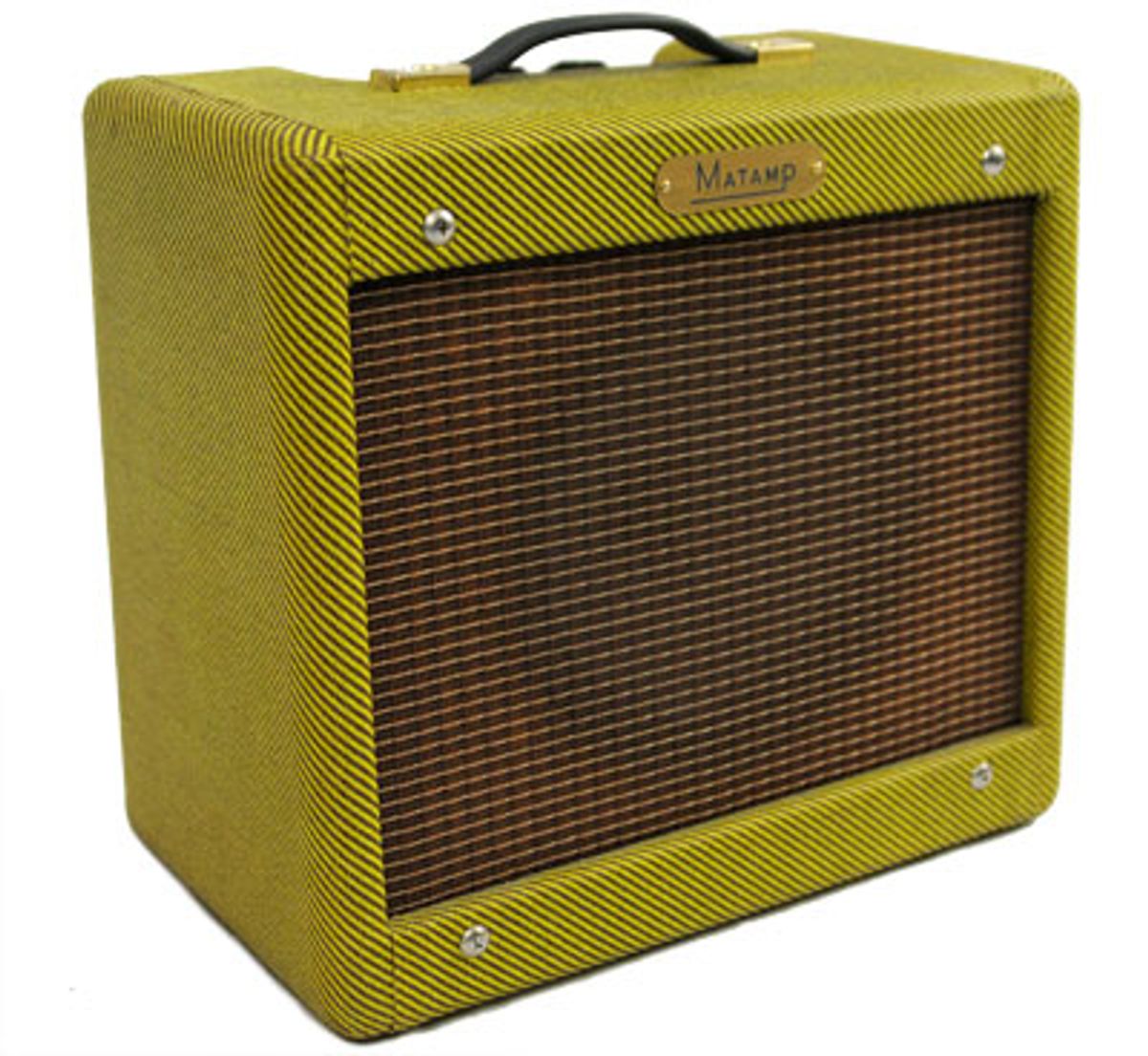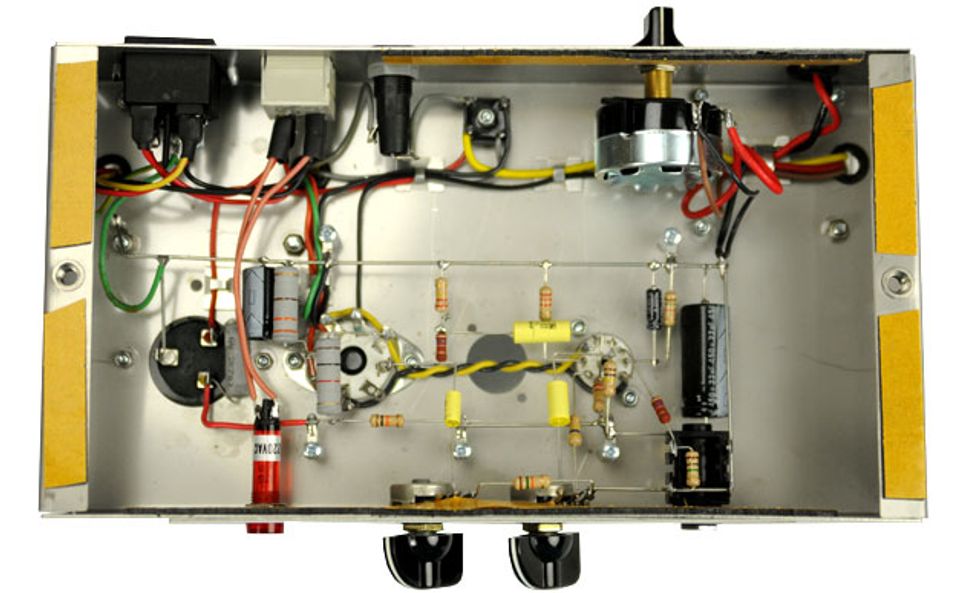
The Spirit is a pint-size combo with vintage tone and feel
A Spirit From the Sky
| Download Example 1 Full Gain |
|
| Download Example 2 Half Max Gain |
|
| Clips recorded with a 2008 Gibson Les Paul Studio | |
The Spirit’s charming tweed 1x8 cabinet was the inspiration for the amp to begin with. Matamp was able to secure 100 unused 1x8 tweed cabinets from Japan, which were constructed back in the 1980s. The old-school look and texture of the cabinets helped plant a seed in the engineers’ heads for the Spirit’s circuit. This idea became the mixture of the fat, brawling sounds of old tweed combos with Matamp’s unique tonal signature. Since they were only able to acquire 100 cabinets, only 100 Spirits exist.
A Ghost Out of Its Shell
In a world where players now have limitless amplification options that borderline on nearly infinite sounds and features, the Spirit is about as barebones as it can get. The diminutive 1x8 combo utilizes a single-channel, Class A design that recalls the classic era of small tube-powered practice amps from the 1950s. The non-master volume combo has only two controls, one for volume and the other for tone manipulation. Despite being only four watts, the Spirit features a volume attenuator, conveniently located on the underside of the chassis. The circuitry inside the chassis is a marvel to look at, with true point-to-point, hand-wired components, expertly soldered and bent to perfect angles. The entire amplification circuit is powered by a single ECC83 tube in the preamp section and a lone 6V6GT in the output section. All of this feeds a solitary Jensen C8R 8” speaker.

The Spirit features true point-to-point wiring built in Meltham, UK
Spiritus Sony
I can’t really sum up the tone and the feel of the Spirit in any other way than to just say that it is a player’s amp. No, it isn’t loud, and no, it certainly isn’t powerful, but what it does achieve is an incredible, nasally drive tone that is a terrifyingly accurate tribute to some of the best overdriven amp tones of the ‘50s and ‘60s. The little beast is Led Zeppelin I all the way, especially using a 2009 Fender American Telecaster to cop some Page-like, slithering leads. I’ve come across some great vintage examples of small tube amps from the golden era of rock ‘n’ roll, ones with sounds slathered in tonal belligerence and bite. I wish that I had found the Spirit before those experiences, so I had a chance to really hear what those amps must have sounded like when they were young and healthy.
The same things that make the Spirit great are also its downfall: it is not an easy amp to play. It really takes a lot of work between my fingers and attack to get any sort of dynamics out of it. This style of playing isn’t nearly as common nowadays, with modern channel switching designs nearly phasing the art of playing with the guitar’s volume knob out of existence.
Plugging in a 2009 Gibson Les Paul Standard, the Spirit got way too muddy with the guitar’s volume knob maxed. I had to work with the bridge pickup’s volume knob to find the sweet spot. But once found, I could quickly switch between lighter and heavier overdrives by changing up my pick attack, while still keeping definition in the highs and mids. This is essential to getting a great tone out of the Spirit, because the amp is extremely easy push into overdrive. Because of this, the single-coils of Tele are a better fit than the Les Paul’s hot humbuckers.
The Spirit’s built-in attenuator only affects the overall output volume of the amp, and I didn’t find it that useful. Unless you are planning on playing in a crowded apartment building, the attenuator probably won’t be a feature that you use too much. Regardless, it functions quite well, keeping the dynamics intact until the wattage drops below 1/2 watt. At that point, the sound gets very reedy and thin.
The Final Mojo
The Matamp Spirit was a real testament to the strength of classic small amp tone and design. It is built just as well as its higher-powered brethren, has a fantastic overall sound and feel, all while having a look that separates it from pack. While the limited-release nature of the amp is enticing, it shouldn’t only be on collectors’ radars. With the traditional sound comes a need for a traditional playing style, so guitarists who fall in the classic country and rock vein should find something to love in the Spirit. It’s one of those amps that forces you to be a better player, which is something that all of us could use.
Buy if...
you’re after an amp that responds well to old-school playing methods, and has a great bite and vintage response.
Skip if...
you need a louder amp with modern tones.
Rating...
|
MSRP $850 - Matamp Amplification - matamp.co.uk
|

